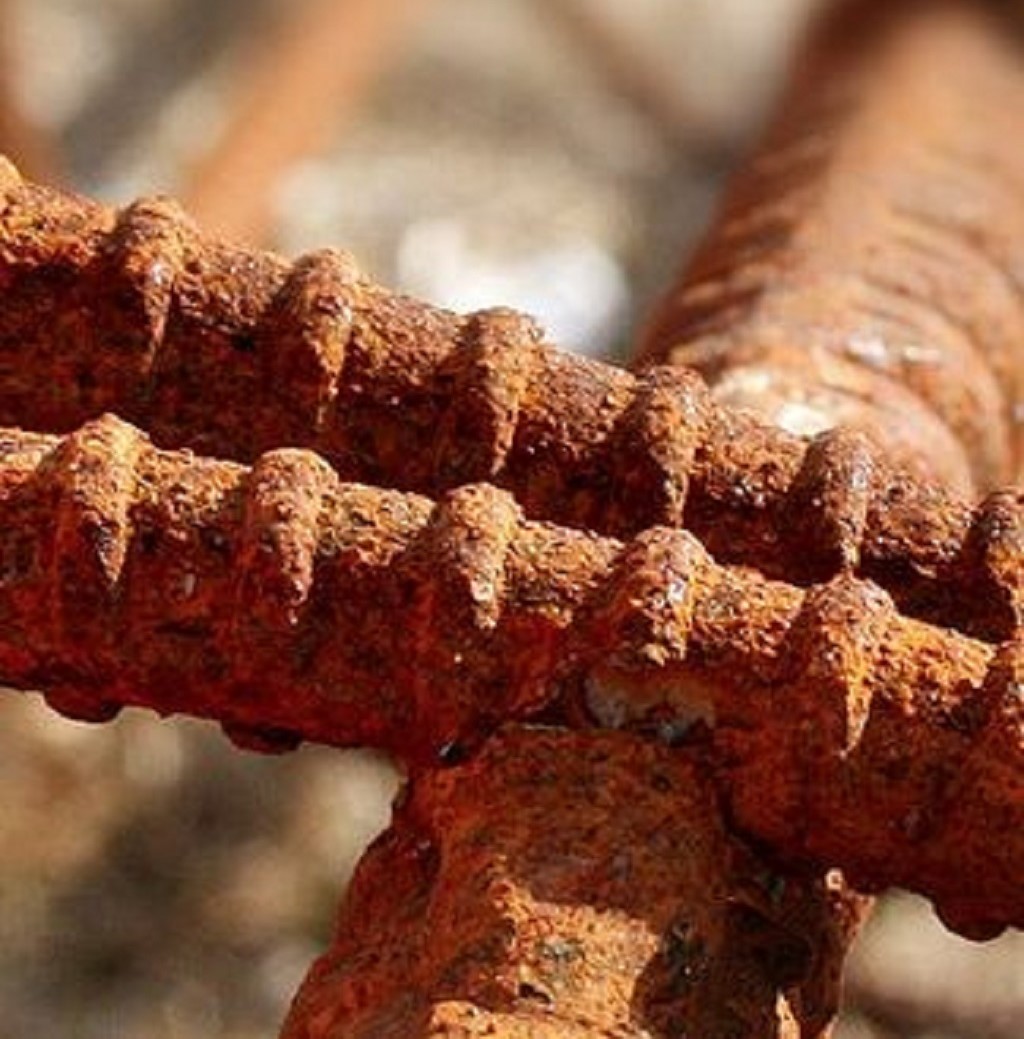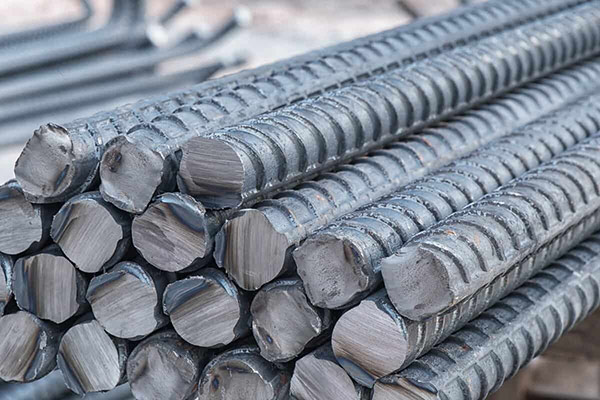Corrosion of steel bars in concrete structures is one of the causes of failure of large structures, which has become a great concern for civil engineers. Therefore, knowing enough information about methods to prevent corrosion rebar in concrete, is one of the Important issues are for such people.
Decreasing the ductility and cracking and adhesion between the reinforcement and concrete, following the corrosion of the rebars and reducing the cross-sectional area of the steel rebars, and leads to early failure of the structure.
The rusting of rebar in concrete is also usually a result of electrochemical reactions. In this case, anodes (positive electrode) and small cathodes (negative electrode) are formed on the surface of the steel rebar, and the flow of ions between these electrodes leads to rust and, as a result, the rebar breaks.
The signs of rebar corrosion in its appearance are as follows:
Formation of white spots:
When the rebars start to corrode, the carbon dioxide in the air reacts with the calcium hydroxide in the cement paste and forms calcium carbonate. This calcium carbonate is carried by moisture and is deposited on the concrete surface and creates white spots.
Creation of brown spots along the rebar:
When the rebars are corroded, a layer of brown iron oxide is formed on them. This iron oxide is transferred to the concrete surface with moisture.
Create a crack:
Corrosion of rebars increases their volume. This extra volume causes pressure on the concrete and creates cracks in the concrete. As the corrosion continues, the cracks become bigger and deeper.
Scaling of concrete coating: due to corrosion and destruction of the bond between concrete and rebars, concrete begins to form several layers and becomes flaky over time.
Bending of rebars:
Peeling of concrete cover and destruction of rebars leads to buckling of main bars. This phenomenon causes the concrete to bulge in that area and eventually, the whole structure may collapse.
Effects of rebar corrosion in concrete

Types of rebar corrosion in reinforced concrete is one of the important issues in the construction and stability of structures. Here, the effects of this phenomenon and ways to deal with it will be discussed.
- Decreasing the strength of rebar:
- Types of rebar corrosion reduce its strength. This can lead to the weakening and destruction of the structure.
- Cracks and fractures:
- These cracks can appear due to the increase in the volume of the rebar as a result of corrosion and lead to the destruction of the structure.
- Decreasing the life of the structure:
- Structures that are attached to rusted rebars may become stressed over time and require frequent repairs.
- Economic damages: Corrosion of rebar can cause serious economic losses to the owners of the structure. Repairs and replacement of rusted rebar bring a lot of costs.
Rebar protection against corrosion
Using protected rebars in construction is the best way to deal with various types of rebar corrosion. Rebar protection is possible in two ways, physical and chemical. The process of these two rebar protection is as follows:
- Physical protection:
- In the form of a concrete coating on the rebar that prevents the penetration of corrosion factors such as free chloride and carbon dioxide into the rebar.
- Chemical protection:
- In this case, they create a protective oxide layer on the rebar to protect it from corrosion.
-
Methods to prevent rebar corrosion in concrete
-
- There are several methods to prevent rebar corrosion in concrete, some of which we will examine below:
Improving concrete performance
One of the ways to prevent rebar corrosion in concrete is to improve concrete performance. To prevent the corrosion of rebar in concrete, the permeability of concrete should be reduced to a great extent.
Irrespective of this case, when making concrete, a smaller amount of water than cement can be used, to delay the penetration of chlorine ions and carbonation.
In order to reduce the size of the holes in the concrete, you can use additives and cement replacement materials such as fly ash, slag, silica fume.
These additives make the holes inside the concrete smaller or block them and increase the reliability of the concrete, and if the concrete is used correctly, it increases the final quality of the concrete.
Using rebar with epoxy coating
Using epoxy coating is one of the ways to prevent rebar corrosion in concrete. Epoxy coating is a physical separator and prevents the penetration of oxygen, chlorides and other corrosive factors to the surface of rebars.
Rebar with epoxy coating is cheaper and more resistant than stainless steel. These rebars are highly resistant to de-icing salts and sea water due to their physical coating, so they are also used in marine structures.
Using waterproof plates
In the methods of preventing corrosion of rebar in concrete, waterproof plates are used in two ways.
The first type is liquid and becomes solid when used. The second type is in the form of a sheet and is connected to concrete. 
-
Galvanized rebars
Using galvanized rebars is one of the ways to prevent rebar corrosion in concrete.
Purchasing galvanized rebar costs a lot, that's why the combination of simple and galvanized rebar is used in structures.
You should know that if you use a combination of ordinary and galvanized rebar, it is possible to lose the galvanized. For this reason, it is better to use complete electrical insulation between the rebars.
Using chemical protection along with galvanized weapons has a high risk and aggravates the corrosion of the rebar.

-
Use of corrosion inhibitors
One of the things that prevent corrosion is calcium nitrite, which is known as the main corrosion inhibitor and is compatible with concrete.
Calcium nitrite has the advantage that it can be added to the concrete mix without affecting the design, construction and performance of the concrete.
In order for calcium nitrite to prevent corrosion, after calculating the amount of chloride applied during the useful life of the structure, a sufficient amount of inhibitor or calcium nitrite should be injected into the concrete.
-
Concluding remarks
Corrosion of rebars can damage concrete structures and reduce their life. To prevent the occurrence of various types of rebar corrosion, it is important to have a proper protection on the rebars and to control the environmental conditions that can lead to corrosion. Through the use of corrosion-resistant concrete and regular monitoring methods, it is possible to ensure the creation of stable concrete structures.



